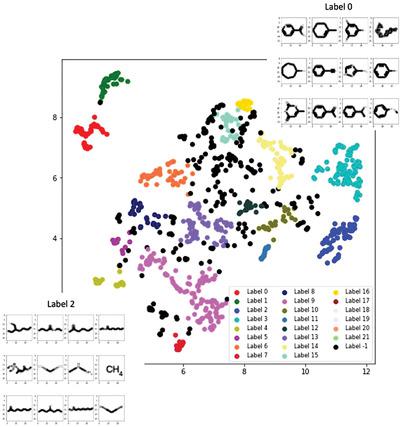当前位置:
X-MOL 学术
›
Adv. Theory Simul.
›
论文详情
Our official English website, www.x-mol.net, welcomes your
feedback! (Note: you will need to create a separate account there.)
Transfer Learning as Tool to Enhance Predictions of Molecular Properties Based on 2D Projections
Advanced Theory and Simulations ( IF 2.9 ) Pub Date : 2020-09-06 , DOI: 10.1002/adts.202000148 Niklas Julian Lentelink 1 , Stefan Palkovits 1
Advanced Theory and Simulations ( IF 2.9 ) Pub Date : 2020-09-06 , DOI: 10.1002/adts.202000148 Niklas Julian Lentelink 1 , Stefan Palkovits 1
Affiliation

|
Images of molecules are widely used to predict molecule properties in teaching and chemical research. A trained chemist can easily derive molecule properties by analyzing its structure and evaluate its functional groups. To predict, for example, the water solubility of an organic compound a chemist would intuitively count the number of polar groups, consider the size of the molecule, and estimate the water/molecule interaction by counting the number of H‐bond donors and acceptors. Therefore, 2D molecule representations and their directly accessible features should provide enough information to predict the molecule's structure‐dependent properties. To support this thesis, different image‐based machine learning approaches as dense neural networks, convolutional neural networks, clustering, data augmentation, and transfer learning are compared and evaluated in this work. The influence of the image size as well as the network size is discussed. Finally, a simple yet effective dense neural network trained on expert preselected, visually accessible features, is presented and its efficiency and comparability to other more complex methods are demonstrated.
中文翻译:

转移学习作为增强基于2D投影的分子特性预测的工具
在教学和化学研究中,分子图像被广泛用于预测分子特性。受过训练的化学家可以通过分析其结构和评估其官能团来轻松获得分子特性。例如,要预测有机化合物的水溶性,化学家会直观地计算极性基团的数量,考虑分子的大小,并通过计算H键供体和受体的数量来估计水/分子的相互作用。因此,二维分子表示及其直接可访问的特征应提供足够的信息来预测分子的结构依赖性。为了支持本论文,我们使用了多种基于图像的机器学习方法,例如密集神经网络,卷积神经网络,聚类,数据增强,在这项工作中,比较和评估了转移学习。讨论了图像大小以及网络大小的影响。最后,介绍了一种经过专家预选,视觉可访问的特征训练的简单而有效的密集神经网络,并证明了其效率和与其他更复杂方法的可比性。
更新日期:2020-10-05
中文翻译:

转移学习作为增强基于2D投影的分子特性预测的工具
在教学和化学研究中,分子图像被广泛用于预测分子特性。受过训练的化学家可以通过分析其结构和评估其官能团来轻松获得分子特性。例如,要预测有机化合物的水溶性,化学家会直观地计算极性基团的数量,考虑分子的大小,并通过计算H键供体和受体的数量来估计水/分子的相互作用。因此,二维分子表示及其直接可访问的特征应提供足够的信息来预测分子的结构依赖性。为了支持本论文,我们使用了多种基于图像的机器学习方法,例如密集神经网络,卷积神经网络,聚类,数据增强,在这项工作中,比较和评估了转移学习。讨论了图像大小以及网络大小的影响。最后,介绍了一种经过专家预选,视觉可访问的特征训练的简单而有效的密集神经网络,并证明了其效率和与其他更复杂方法的可比性。











































 京公网安备 11010802027423号
京公网安备 11010802027423号